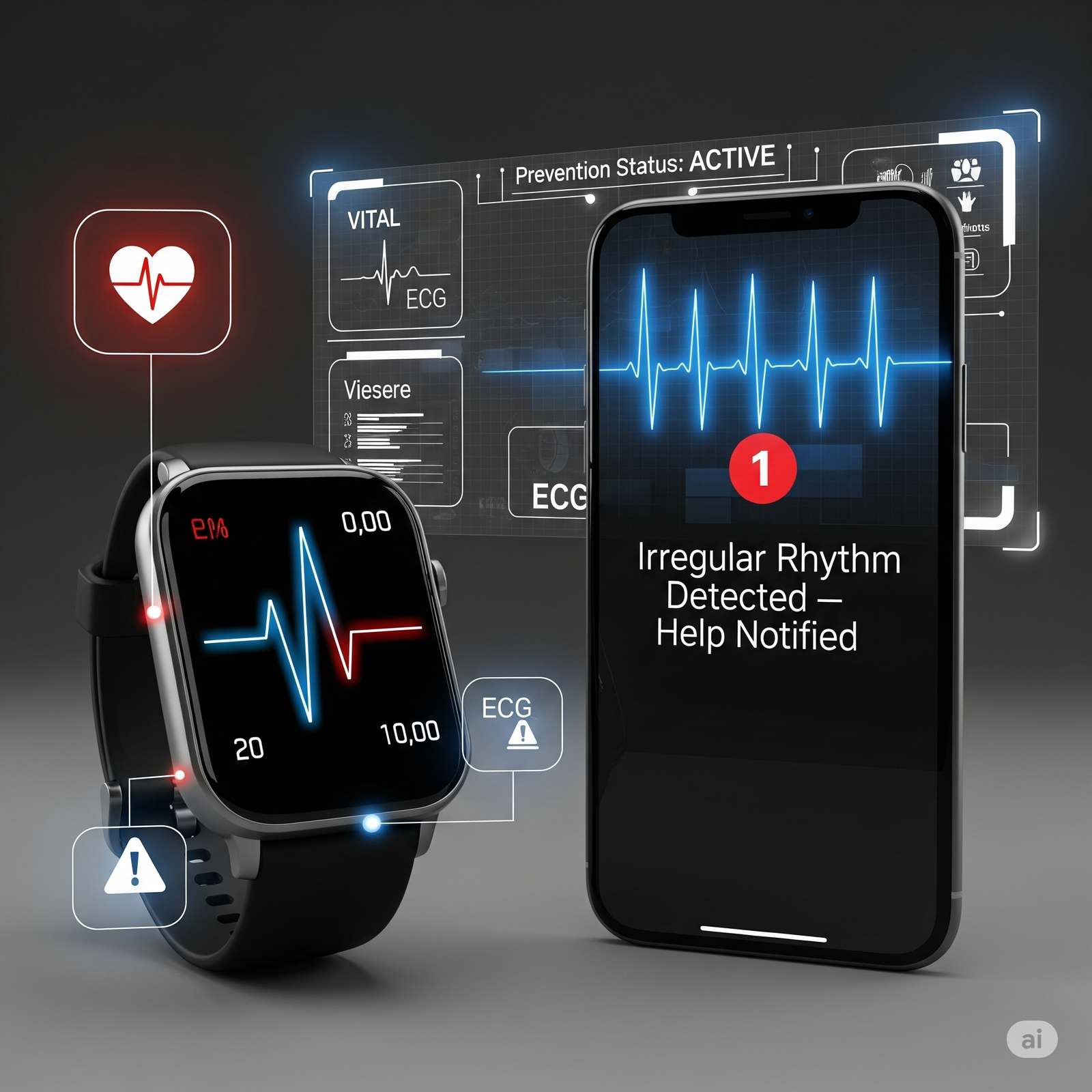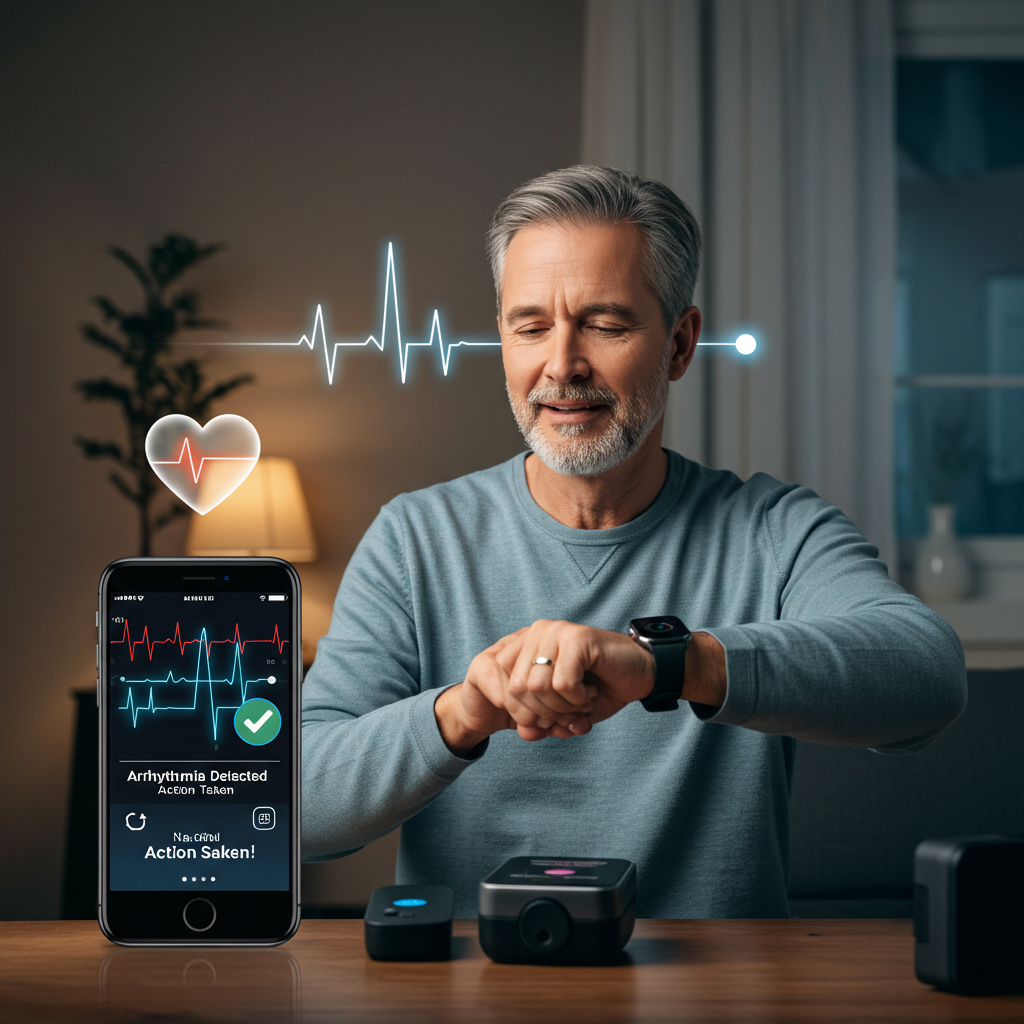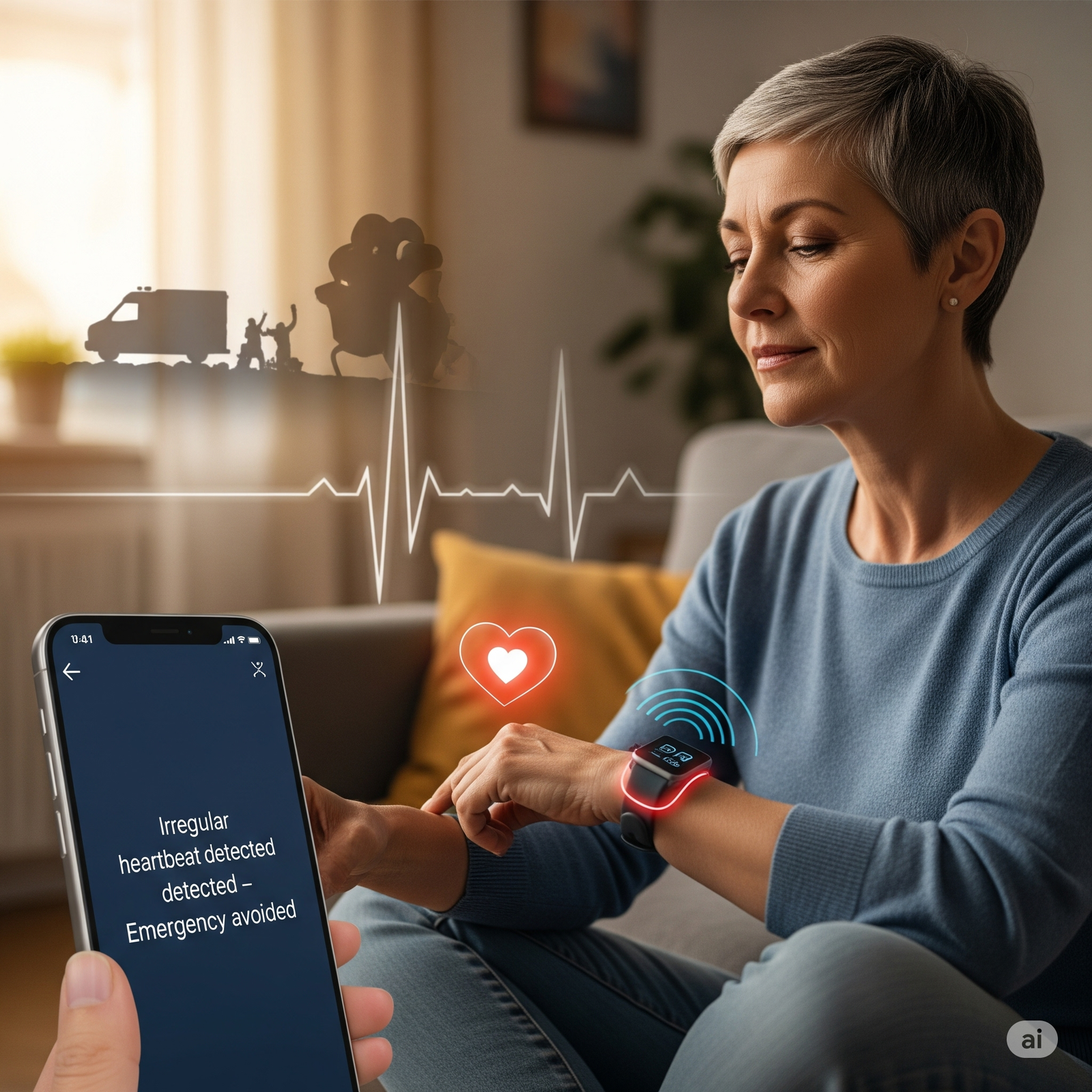Heart disease is often referred to as the “silent killer” for a reason. It strikes without obvious warning signs, making it difficult for patients and even doctors to catch early indicators before it’s too late. Every year, millions of people suffer heart attacks or strokes that could have been avoided with earlier detection.
The traditional approach to identifying heart irregularities involves hospital visits and bulky ekg machines. Unfortunately, most people don’t seek medical attention until they experience symptoms, and by then, serious damage may already have occurred. The need for accessible, real-time monitoring solutions is more critical than ever.
That’s where personal technology steps in, introducing Personal EKG Monitors to track your heart outside the clinic.
Introducing the Solution: Personal EKG Monitors
Personal EKG Monitors are compact, wearable, or handheld devices that allow you to track your heart’s electrical signals anytime, anywhere. They work similarly to hospital-grade equipment but are personalized for individual use. They offer convenience, speed, and proactive monitoring in a portable format.
Unlike the occasional check-up, these innovative cardiac devices allow for daily tracking, catching signs of arrhythmia, irregular heartbeats, or changes in your rhythm that might be a symptom of severe issues. They’re perfect for people with pre-existing conditions, those at risk, or anyone who wants to stay ahead of potential problems.
As we delve into their functionality, it becomes clear why these smart tools are quickly becoming a cornerstone of modern preventive care.

How Personal EKG Monitors Work
A heartbeat is powered by tiny electrical impulses generated by your heart muscle. Personal EKG Monitors detect these signals through sensors placed on the skin. They read the waveform of your heartbeat and compare it against established healthy parameters.
These devices typically connect to a smartphone or display screen, showing real-time results in seconds. If there’s anything abnormal, like skipped beats or rapid fluctuations, you’ll see it immediately. Many models even offer cloud syncing so that your physician can access the data remotely.
Advanced models use AI-backed algorithms to analyze readings. They allow them to flag potential signs of atrial fibrillation (AFib) or other common rhythm disorders.
From function to insight, the benefits are tangible and even life-saving.
Types of Heart Conditions They Can Detect
Thanks to continuous tracking and real-time alerts, the Personal EKG Monitor can identify a range of heart conditions before they become extremely dangerous. Here are some key conditions these devices commonly detect:
- Atrial Fibrillation (AFib): An irregular, often rapid heart rhythm that increases the risk of stroke. It may go unnoticed for months without symptoms.
- Bradycardia: This occurs when your heart beats too slowly, potentially leading to fatigue, dizziness, or fainting spells.
- Tachycardia: An abnormally fast heart rate that can be a precursor to serious conditions like heart failure or cardiac arrest.
- Skipped or Irregular Beats: These are often benign but could also signal underlying issues if they occur frequently.
The earlier we detect these abnormalities, the easier it is to treat or manage them before they cause damage.
Which brings us to how these monitors compare to their clinical counterparts.

Personal vs. Traditional Monitoring
Many wonder if these convenient devices are as effective as traditional ekg machines found in hospitals. While they don’t replace a full 12-lead ECG used in clinical diagnostics, Personal EKG Monitors are incredibly useful for continuous, day-to-day heart monitoring.
Here’s a quick comparison:
- Availability: Traditional equipment is used only during scheduled appointments. While personal EKG devices offer around-the-clock access.
- Lead Count: Clinical machines use 12 leads for detailed insight; personal monitors typically use one or six leads, which can detect common rhythm problems.
- Result Time: Hospital equipment needs trained personnel. Personal monitors provide results instantly and can even email them directly to your physician.
- Convenience: One is bound to a clinic, the other you can keep in pocket.
These modern devices don’t aim to replace medical visits rather, it complements them by filling the critical gap between appointments.

Extended Benefits of Daily Heart Monitoring
When incorporated into your lifestyle, Personal EKG Monitors offer more than just early detection. Here are additional long-term benefits:
What it Does:
- Empowerment Through Data: Knowing your numbers builds confidence and makes you more aware of your health status.
- Reduced Anxiety: For those with a history of heart disease, having access to a portable heart monitor can reduce worry and uncertainty.
- Better Doctor Visits: Bringing your readings to appointments gives your doctor a clearer picture of your daily rhythms.
- Improved Outcomes: The earlier treatment begins, the more successful it is. That’s true for everything from minor arrhythmias to major conditions.
As you build the habit of daily or weekly use, your personal ekg machine becomes a preventive tool tailored to your heart.
Let’s look at the best usage practices to make the most of this investment.
Using Personal EKG Devices Effectively
To ensure you’re getting accurate and meaningful data from an ekg heart rate monitor, follow these best practices:
- Take Readings When Calm: Sitting still and relaxed minimizes interference or false readings.
- Use at the Same Time Daily: Establishing a routine gives you a baseline to compare against.
- Keep the Electrodes Clean: Wipe them regularly for optimal skin contact.
- Record Symptoms: Jot down how you feel before and after each reading. Many apps offer this feature.
These tips help ensure your data is as reliable and actionable.
Of course, technology is only as valuable as the support system behind it.
What It Means for Patients and Healthcare Providers
Personal EKG Monitors has reshaped how doctors and patients collaborate. Instead of episodic care that’s based only on office visits, this continuous stream of heart data allows for a more connected and proactive relationship.
For physicians, it means earlier interventions, better insight, and improved patient outcomes.
For patients, it means ownership, control, and reduced surprises.
By integrating devices like ecg heart monitor, healthcare is no longer reactive, but it becomes dynamic, data-driven, and immediate.
What lies ahead could make heart health even more seamless.
The Future of Monitoring: Smarter, Smaller, Sharper
Innovation in Personal EKG Monitors is growing at a rapid pace. Here’s what we can expect next:
- Integration With Wearables: Devices like the Apple Watch and Fitbit are evolving into full-scale heart monitors with real-time EKG capabilities.
- Smarter Algorithms: AI will help predict problems before they occur by analyzing trends over-time.
- Better Sharing Features: Instant transmission of data to a doctor’s dashboard can speed up care and reduce in-person visits.
- Global Access: As these devices become more affordable, even remote and underserved communities will benefit.
This evolution is turning the tide against heart disease one heartbeat at a time.
Let’s wrap up with what this all means for you.
Your heart speaks through rhythm, and Personal EKG Monitors are the translator that helps you listen. Whether you’re managing a known condition or simply taking control of your future health, these devices empower you with knowledge, timing, and confidence.
They detect the undetectable. They simplify the complex. And most importantly, they make every beat count.
As technology moves forward, these compact, intelligent tools are transforming lives by catching problems before they become emergencies.
Don’t wait for a wake-up call. Equip yourself with wearable heart monitors today and take control of your heart health.


